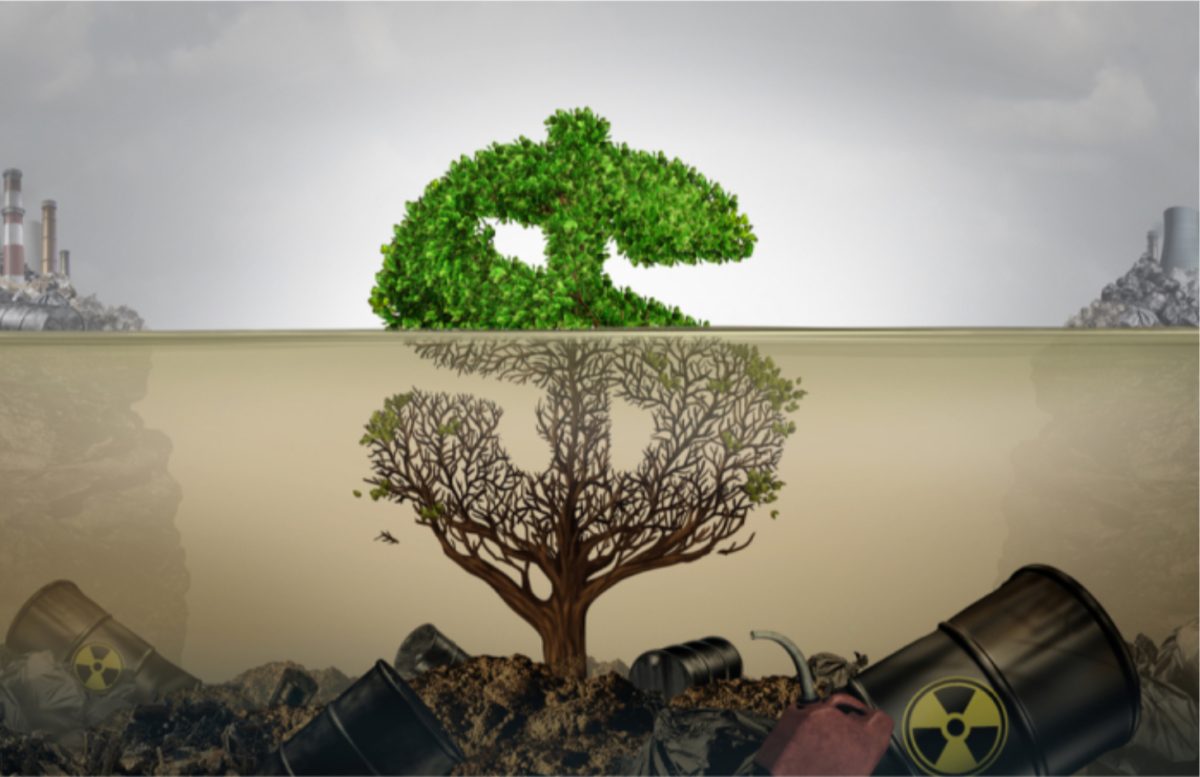Just as labels reading “Cruelty Free” symbolize a care for animal security, many companies are crafting their own labels for those who care for the environment.
According to a Deloitte article, 42% of consumers have changed their spending habits because of their environmental politics. In addition, 23% say that they will buy products if a company’s environmental policies are listed for buyers.
Unfortunately, businesses are beginning to take advantage of these consumer trends. Looking to impress the buyer with environmentally friendly products, many companies go above and beyond their own limits, guaranteeing unobtainable products and promises.
This misunderstanding is called Greenwashing. Defined as a practice by companies to promote sustainability for marketing purposes, rather than taking action to be environmentally conscious, Greenwashing is used to take advantage of customers who are more likely to buy “green” products.
Within large company websites, many have a tab labeled “sustainability”. Under this page, environmental promises are listed, however, they are often encased in jargon. Commonly used words like “Carbon Neutral” and “Net Zero” are, more often than not, used to deliver empty promises about the company’s untruthful clean practices.
A quick look on Amazon’s website will reveal the falsehoods of their sustainability goals. Promising 100% renewable energy by 2025 is not only false but virtually impossible. For Amazon’s goal to be obtainable, it would require assurance that all of their sellers be 100% renewable. Further, their means of transport would have to be solely electric.
Amazon, as well as many other large companies, create narratives of their successful environmental changes in order to draw consumers and impress buyers. Despite companies often lying about their environmental initiatives, the hefty goals stated are not always lies. Untruthful companies are legally allowed to share these statistics because of the energy credits they buy from other clean companies. REC’s (Renewable Energy Credits) are bought in order to assign “ownership” to renewable practices. The ownership of the credits only provide the image of sustainability; they do not advance the company’s advance in becoming clean.
A Harvard Business Review article describes the effects of RECs, “If your goal is to claim that your company offsets the carbon produced by 100% of its electricity usage, buy RECs and leave it at that.”
In 2022, Amazon was the number one corporate buyer of RECS, shown in a study conducted by BloombergNET. Buying 10.9 Gigawatts of power, Amazon bought enough energy to power the entire country of Ecuador. The Director of Energy and Water Infrastructure for Amazon, Charley Diatch, has stated, “But that’s [REC] really more of a bridging solution and not our core strategy, which is around enabling new wind and solar projects.”
The idea is not to criticize Amazon’s current infrastructure, as it is clear they are making some strides in becoming more environmentally conscious since their 2019 Climate Fund Pledge. The idea is to prove preposterous Greenwashing claims false. Although companies like Amazon could be making big strides to become more sustainable, their promised claims are still not entirely truthful.
REC’s, although a commonly used form of Greenwashing, are not the sole way companies mislead their customers. Taking advantage of vague environmental legislation, some companies do choose the route of lies. In May, H&M was threatened with a lawsuit regarding their “Conscious Choice” line, using the word sustainable to market the products— the only environmentally adjacent word the Federal Trade Commission has not regulated.
“General Environmental Benefit Claims” like “eco-friendly,” “greener,” and “environmentally friendly” are regulated by the FTC, however there are clearly gray or missing areas in their guidelines. As of now, the Federal Trade Commission’s revised “Green Guides” as the rulebook for environmental marketing. Created in 1992, and most recently revised in 2022, this document does not stand as enforcement for Greenwashing, but rather advises companies against it. Although Section 5 of the FTC Act permits intervention once false policies are exposed, the lack of enforcement speaks to the commonality of greenwashing today.
There is no exact equation for finding such brands that do not act through greenwashing, but looking at the FTC’s legislation, there are key words and phrases that can assist. One word not protected by the rules is sustainable, or sustainability— as seen in H&M’s controversial “Conscious Choice” line. Word choice that large companies use in advertisements or product line names are not picked accidentally.
Most companies also have sustainability pages, like Amazon’s. Theirs is extensive. The large span of their empire does not compare to smaller companies, however, a lot can be inferred from the information on this page.
Patagonia, said to be a leading environmental brand, has a “Our Footprint” page. Under the page are articles about issues with fabrics like microfiber and their own environmental efforts like their 2022 project to help clean Chile’s coast. Their page is an astonishing example of environmental action and avocation.
Finding environmentally friendly brands can be equally challenging and expensive, though. The sustainability tab is a good place to start.








